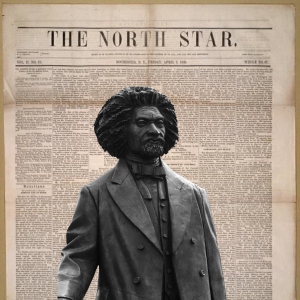The Power of Accessories: Elevating Your Look with Statement Pieces Rooted in Black Culture
3 min read
In the ever-evolving world of fashion, accessories are more than just finishing touches—they’re declarations of identity, heritage, and resistance. For centuries, Black communities around the globe have used adornments not only to enhance personal style but to tell stories, honor ancestry, and carve out space in a world that too often tries to erase us.
From the intricate beadwork of the Maasai to the gold hoop earrings worn proudly on city streets, accessories have served as cultural signifiers—silent but bold statements of where we come from and who we are.
Crowns, Caps, and Culture
Let’s start at the top—literally. Headwraps, durags, and crowns (yes, crowns) have deep roots in the African diaspora. The gele in West African cultures isn’t just a headwrap; it’s a sculptural art form. The durag, while often criminalized in mainstream media, has been a symbol of Black resilience, protecting natural hair and maintaining waves—a style legacy passed down like a rite of passage.
Even the way we rock fitted caps and bucket hats carries a rhythm of swag that can be traced through decades of hip-hop and street style. Each tilt and curve of the brim is part of a fashion dialect spoken fluently across the diaspora.
Earrings That Echo Generations
Those door-knocker earrings? Iconic. Gold bamboo hoops engraved with names? A whole era. Earrings have been used by Black women especially to assert beauty on their own terms. In the ‘80s and ‘90s, they were statements of power and femininity in an industry that didn’t always recognize our shine.
Today, designers like Melody Ehsani and Jam + Rico are taking these cultural staples and remixing them—keeping the history intact but leveling them up for the new generation. They’re reminders that adornment can be armor. And that beauty, for us, is bold.
Neckwear that Speaks Volumes
Chains have always had dual meanings in our communities—from symbols of enslavement to emblems of triumph. A thick Cuban link or a gold rope chain isn’t just about flash—it’s about legacy. It’s about turning pain into flex. It’s about ownership and style autonomy.
Let’s not forget the resurgence of nameplates—those necklaces that spell out your name or rep your block. It’s personal. It’s intimate. It says, “This is who I am. Learn it. Remember it.”
Rings, Bangles, and the Language of Layers
Wearing multiple rings, stacked bangles, and layers of bracelets is a form of self-expression that’s loud in the best way. Whether it’s a pinky ring that nods to old-school soul or an arm full of wooden bangles from a local Black vendor, these pieces tell stories without saying a word.
Jewelry rooted in Afrocentric materials—wood, cowrie shells, leather, brass—speak to our spiritual practices, our connections to nature, and our ancestral aesthetic. In African spiritual traditions, cowrie shells have long symbolized fertility and prosperity. Now, they’re seen dangling from earrings and necklaces in ways that are equal parts sacred and stylish.
Sneakers, Slides & Soulful Soles
Let’s not ignore the power of footwear in Black culture. From Air Jordans to custom-designed Ankara print kicks, shoes are often the exclamation point on a dope outfit. Sneakers in our communities are more than footwear—they’re collectibles, conversation starters, and in many cases, cultural artifacts.
Accessories like socks (yes, socks!) printed with historical Black figures or pro-Black affirmations also take center stage. Style isn’t always about what’s loudest—sometimes it’s in the details.
Supporting Black Artisans & Creators
One of the most powerful things we can do with our style is use it to support our own. The rise of Black-owned accessory brands is not just a trend—it’s a movement. From statement earrings crafted by artisans in Ghana to locally made enamel pins shouting out HBCUs, there’s an entire ecosystem of creators making culturally rooted accessories with pride and power.
When you wear Black, you wear Black. You’re not just rocking fashion—you’re investing in culture, in families, in future legacies.







